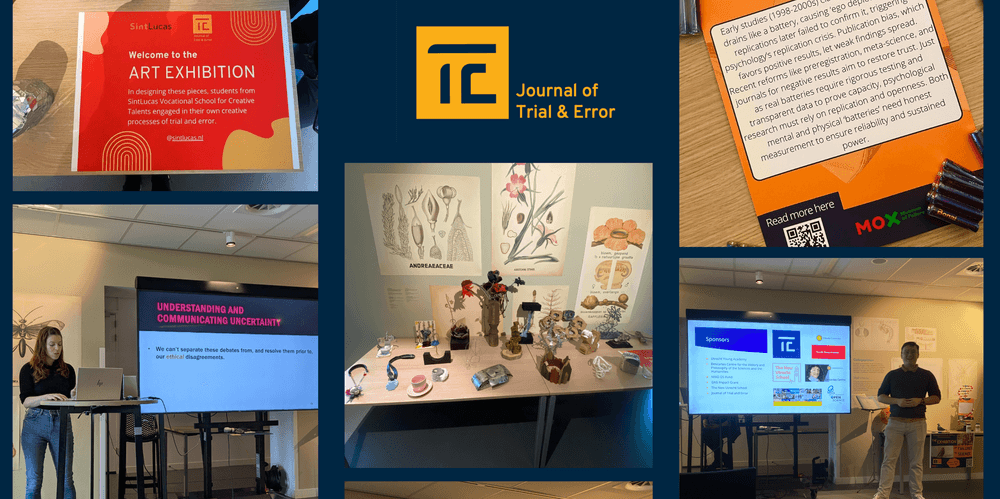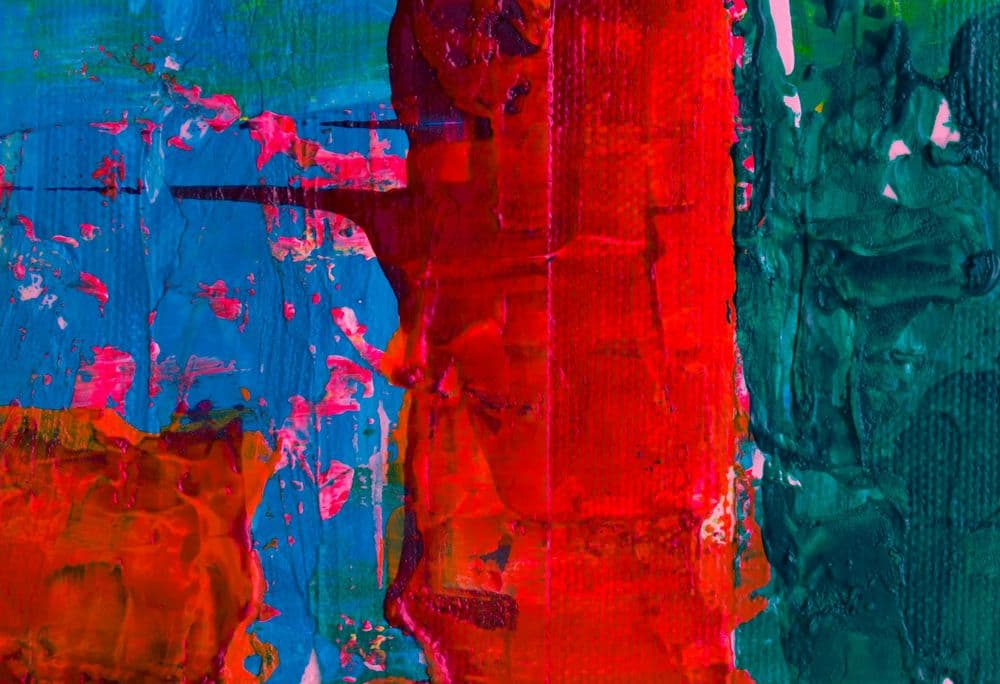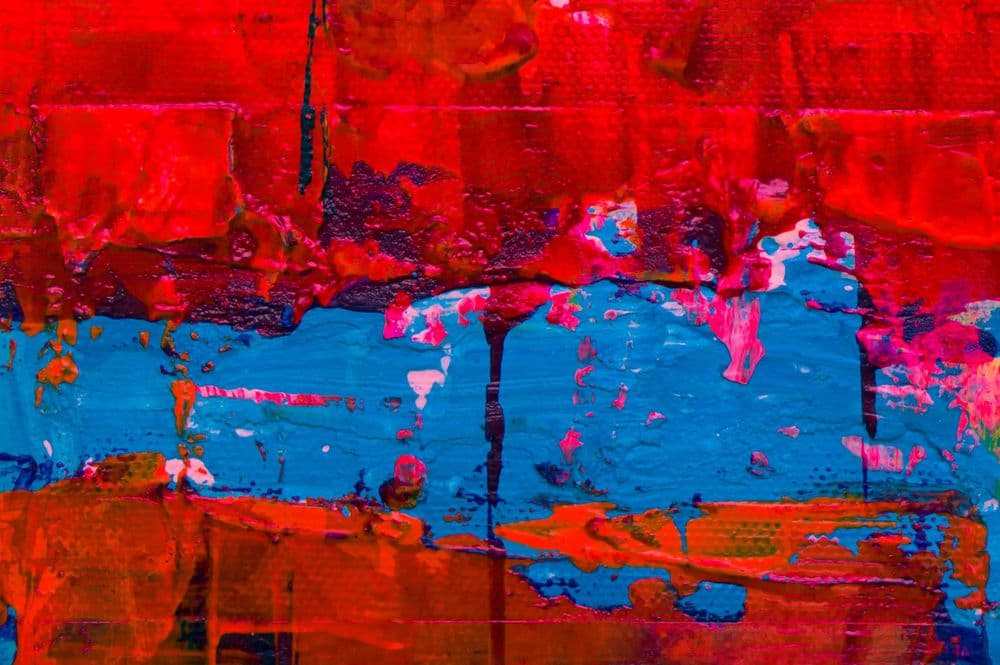~ 15 min read
Cultures of Trial and Error: Self, Correction, and Science in Conflict-Laden Science
JOTE x NanoBubbles present Cultures of Trial and Error: a peer reviewed blog series on error correction in science.
Once upon a time, when it was said that science self-corrects, the image was of a relatively unified culture, a body of practices guided by shared norms of disinterested inquiry. Thus, for example, in the middle of the twentieth century the philosopher Herbert Feigl wrote, “The self-corrective aspect of science has rightly been stressed as its most important characteristic …” (1949, p. 142). The posts in this series, and the wide-ranging articles in The Journal of Trial and Error, challenge both that image of unity and the efficacy of one-size-fits-all interventions to promote self-correction.
The medical science I study is often the product of diverse, overlapping, and sometimes competing institutions, actors, and interests, especially those closely entangled with the pharmaceutical industry.
Pharmaceutical companies don’t merely provide funding that creates conflicts of interest among scientists. Rather, they actively graft their research and publication efforts onto the body of medical science, resulting in an integrated whole. As I and many others have shown, clinical trials are designed, run, and publicized under company control (e.g. Bernisson & Sismondo, 2024; Cosgrove et al., 2023; Fugh-Berman, 2010; Gagnon & Dong, 2023; Ross et al., 2008; Sismondo, 2018). Academic medical researchers and other apparently independent physicians serve as authors on ghostwritten publications, lending legitimacy and a gloss of independence to corporate research. This isn’t science gone astray due to isolated moral failings; it’s science shaped by commercial objectives, objectives that even determine what counts as exemplary research and trustworthy knowledge. Think less ‘rogue scientists break norms’ and more ‘teams of professionals in blazers execute publication strategies’. Then pharmaceutical companies hire (or anoint) ‘key opinion leaders’, who will go on speaking tours to repeat and amplify the messages of corporate research. Their messages go on to circulate in continuing medical education courses, advertisements, etc. The resulting medical science has become permeated with commercial interests, to the point that those interests are largely taken for granted.
If we hope to see self-correction in this arena, what is the scientific ‘self’ that will do the correcting? Can we find it in some original body of medical science – some idealized core that might challenge the grafted parts? Yes, many people are trying to act as part of that idealized core, but they are mostly gleaners of data, marginal to the industrial harvesting of research results for broad medical interventions. They include medical science sleuths who file freedom of information requests to access protocols and clinical study reports submitted for regulatory approval. Sometimes, they dig up fascinating data and subject it to revealing scrutiny and analysis. But they rarely alter the deeply furrowed lanes that pharmaceutical companies have carved.
In my email feed, as I write this, is a post to the blog Mad in America. Pharmaceutical industry critic Peter Gøtzsche (2025) reports on his failed request that the UK’s Medicines & Healthcare products Regulatory Agency (MHRA) change the package inserts for antidepressants. Gøtzsche insists that the MHRA should remove all claims that depression is caused by chemical imbalances in the brain. As has been well known for decades, there has never been any evidence for the imbalance thesis, or for the more specific claim that depression is caused by a shortage of serotonin. Yet the imbalance claim continues to be recited by physicians, embedding patients’ depressions in possibly long-term brain chemistry – the recitations include some by physicians who also say that the chemical imbalance claim is just an ‘urban legend’ (Ang et al., 2022). The MHRA is not willing to participate in any correction of this widely circulating lore. Nor is the industry interested in correction, given that the imbalance thesis grounds immensely profitable drugs – though occasionally companies challenge the lore to replace old drugs with new ones, as when Eli Lilly successfully converted physicians’ diagnoses of depression with ones of bipolar disorder, converting prescriptions of its off-patent Prozac with its in-patent Zyprexa (Applbaum, 2009).
These issues become even more concerning in the light of a new study by Lenzer and Brownlee (2025), also in my email feed as I write. Through painstaking work, these researchers showed that 73% of drugs approved by the US Food and Drug Administration (FDA) had not been supported by studies that met the FDA’s basic criteria for “substantial evidence” of effectiveness. Cancer drugs were especially likely to have been approved without evidence. And a number of the approved drugs have been shown to be dangerous. I very much doubt that anybody expects to see many, or perhaps even any, of these drugs withdrawn in the wake of Lenzer and Brownlee’s study. Instead, some of them are widely prescribed, with the FDA’s approval taken as reflecting evidence of safety and efficacy. The ‘self’ of self-correcting science here includes institutions and practices deeply structured by the interests of powerful actors, and so often resistant to correction – though see below on the “Make America Healthy Again” revolution at the FDA!
This brings us to ‘correction’. In the storybook version, correction happens when flawed findings are identified and replaced through internal processes of critique, replication, or the production of new evidence. But what happens when the conditions of possibility for correction are shaped by the same forces that produced the flawed knowledge? If pharmaceutical companies ghost-manage research (Sismondo, 2018), they can also ghost-manage the avoidance of corrections. Negative trials may go unpublished; unfavorable data can be spun or buried; publication strategies may flood the literature with positive results, shaping what later reviews and meta-analyses can find. Correction may still occur, but it is slower, harder, and often partial, because the conditions for it are compromised from the outset.
Let me switch to a very different example of conflicted science, where the dominant forces are overtly political and even geopolitical: the origins of the virus SARS-CoV-2 and the disease Covid-19. Early in the pandemic, the ‘natural origins’ hypothesis (in terms of ‘zoonotic spillover’) was dominant. For example, a substantial epidemiological analysis arguing that a seafood market in Wuhan was the epicentre of early Covid cases (Worobey et al., 2022) received wide coverage. Alternative hypotheses, including that the virus originated in a lab, were treated as fringe or conspiratorial (Lewandowsky et al., 2023). In 2020, the ‘lab leak’ idea’s (evidence-free) promotion by President Donald Trump, alongside racist labels for the virus, only helped to discredit the hypothesis (Singh et al., 2020).
Only gradually, through trickles of evidence and shifting political contexts, did the lab leak hypothesis gain respectability and attract serious scientific and journalistic attention. Today, the WHO’s committee on the virus’s origins recognizes that the evidence is inconclusive, though it still considers zoonotic spillover the best-supported hypothesis (SAGO, 2025). Nonetheless, numerous scientific papers and reports have argued that the lab leak hypothesis needs to be taken seriously. US agencies, from the FBI (under a Democratic administration) to the CIA (in a report prepared for a Democratic and then released under a Republican administration), have announced that the lab leak hypothesis is the more likely of the two, though they acknowledge that the evidence is weak (CBS News, 2023; Honderich, 2025), especially given China’s refusal to allow a full external investigation.
This shift might be seen as an instance of self-correction: new evidence and arguments challenging an initial consensus. But here too, the boundaries of the ‘self’ and ‘science,’ and the dynamics of ‘correction’, are complex.
Covid has contributed to sweeping political and cultural polarizations (e.g. Bharti & Sismondo, 2024), and the main competing views on the virus’s origins have fallen on one side or the other of a key dividing line (e.g. Horton, 2025). The zoonotic spillover hypothesis has become, roughly, the establishment stance, endorsed by mainstream institutions, major public health agencies, and much of the scientific publishing ecosystem. Here the ‘establishment’ is aligned with recognized expertise, professional authority, and institutional legitimacy.
The lab leak hypothesis has become, also roughly, a populist stance, reflecting skepticism toward elites and elite institutions. Here ‘populism’ is a set of attitudes, identities, and movements propelled by rhetorics of anti-elitism, suspicion of authority, and appeal to ‘the people’ and their common sense.
The establishment/populist divide is not about power. For example, the current Trump administration is staying close to its populist roots, even though it controls almost all of the important levers of power in the US. Especially relevant here, Robert F. Kennedy Jr., the current US Secretary of Health and Human Services, has been using his position to push forward his anti-establishment “Make America Healthy Again” campaign. This has involved weakening the government’s support for vaccines, challenging entrenched relations between large corporations and the FDA – which, in the view of this author, may lead to some needed and healthy corrections – and overturning the leadership of the Centers for Disease Control (CDC). On the last of these, Kennedy recently accused the CDC of lying to Americans about masks, vaccines, and social distancing: “I need to fire some of those people and make sure this doesn’t happen again” (Thomson Reuters, 2025).
In the contest over the origins of SARS-CoV-2, what counted as admissible evidence, whose voices were heard, and what kinds of inquiry were funded and published. All were shaped by broader institutional, political, and geopolitical contexts. The boundaries of science have never been clean, of course, but on this issue the FBI and CIA (!) became relevant voices in a supposedly scientific debate, given their roles in interpreting Chinese actions and statements. One could be forgiven for wondering whether peer review needed a counterintelligence wing. Geopolitical tensions, national security concerns, institutional reputations, and media narratives all helped determine which hypotheses gained traction in different moments, audiences, and contexts. Correction, if that’s the right word, is not an internal matter of better evidence displacing worse. It is the result of shifting configurations of authority, interest, and possibility.
The principle of symmetry in STS urges us to explain beliefs we take to be true and those we take to be false in the same terms. Successes and failures, knowledge and error, are to be analyzed using the same kinds of causes. Most readers of this journal and this series of blog posts, this author included, are part of the establishment. Nonetheless, as analysts we should resist the temptation to treat errors as the intrusion of external forces and corrections as the return of autonomous scientific reason. Both are products of broadly the same kinds of conditions. The shifts in SARS-CoV-2 origin theories reflect changing configurations of knowledge, power, and interest.
Where does this leave the idea of self-correction in conflict-laden science? It’s not that science cannot or does not correct itself. But in cases like those above, the metaphor conceals as much as it reveals. The ‘self’ is heterogeneous, structured by relations of power, interest, and legitimacy that exceed any simple internal process. The ‘correction’ is not a clean triumph of better over worse, but the outcome of struggles over what counts as knowledge, what counts as error, and who gets to decide.
And so the storybook version, with brave truth-seekers armed with data and rationality and slaying the dragons of error, turns out to be a fable, albeit one with staying power. In its place, we find a messier but more instructive tale, in which science sometimes corrects itself, sometimes evades correction, and always does so amid tangled alliances and competing narrators. Recognizing this complexity can help us develop more robust practices of critique and reform – ones that attend not just to errors in reasoning or evidence, but to the conditions that make some errors easy to perpetuate and some corrections hard to achieve. If there is to be a moral to this story, it is that self-correction may be real, but it is not simple.
This blog post series has been financially supported by 'NanoBubbles: how, when and why does science fail to correct itself', a project that has received Synergy grant funding from the European Research Council (ERC), within the European Union’s Horizon 2020 programme, grant agreement no. 951393.
References
Ang, B., Horowitz, M., and Moncrieff, J. (2022). Is the chemical imbalance an ‘urban legend’? An exploration of the status of the serotonin theory of depression in the scientific literature. SSM – Mental Health 2 (December): 100133.
Applbaum K. (2009) Getting to yes: Corporate power and the creation of a psychopharmaceutical blockbuster. Culture, Medicine and Psychiatry. (2009) 33:185–215. doi: 10.1007/s11013-009-9129-3
Bernisson, M., & Sismondo, S. (2024). Promoting opioids, a story about how to influence medical science and opinions. Frontiers in Medicine, 11, 1327939. doi: 10.3389/fmed.2024.1327939
Bharti, N., & Sismondo, S. (2024). Political prescriptions: three pandemic stories. Science, Technology, & Human Values, 49(2), 371-402. https://doi.org/10.1177/01622439221123831
CBS News (2023, 1 March). FBI chief says agency feels COVID pandemic likely started with Chinese lab leak. CBS News (1 March). https://www.cbsnews.com/news/chris-wray-covid-origin-likely-wuhan-labl-leak/#:~:text=FBI%20chief%20says%20agency%20feels,World
Cosgrove, L., Patterson, E. H., & Bursztajn, H. J. (2023). Industry influence on mental health research: Depression as a case example. Frontiers in Medicine, 10. doi: 10.3389/fmed.2023.1320304
Fugh-Berman A, J. (2010). The haunting of medical journals: how ghostwriting sold ‘HRT’. PLoS Med 7:e1000335. doi: 10.1371/journal.pmed.1000335
Gagnon, M. A., & Dong, M. (2023). What did the scientific literature learn from internal company documents in the pharmaceutical industry? A scoping review. Cochrane Evidence Synthesis and Methods (2023) 1:e12011. doi: 10.1002/cesm.12011
Gøtzsche, P. C. (2025). Protecting the false narrative about antidepressants. Mad in America (7 July). https://www.madinamerica.com/2025/07/protecting-the-false-narrative-about-antidepressants/
Honderich, H. (2025, 25 Jan.). CIA says lab leak most likely source of Covid outbreak. BBC (25 January). https://www.bbc.com/news/articles/cd9qjjj4zy5o
Horton, L. (2025). ‘Zoonati’ vs. ‘epistemic trespassers’: Scientific identity in contentious online advocacy campaigns on the origins of SARS-CoV-2. Social Studies of Science 55(3),
Lenzer, J., & Brownlee S. (2025). FDA approved – and ineffective. The Lever (June 5). https://www.levernews.com/fda-approved-and-ineffective/
Lewandowsky, S., Jacobs, P. H., & Neil, S. (2023) Leak or leap? Evidence and cognition surrounding the origins of the SARS CoV-2 virus. In Butter, M., & Knight, P. (Eds.) Covid conspiracy theories in Global perspective. Taylor & Francis, ch. 2. https://doi.org/10.4324/9781003330769
Ross, J. S., Hill, K. P., Egilman, D. S., & Krumholz, H. M. (2008). Guest authorship and ghostwriting in publications related to rofecoxib: a case study of industry documents from rofecoxib litigation. JAMA, 299(15), 1800-1812. doi: 10.1001/jama.299.15.1800
SAGO [Scientific Advisory Group for the Origins of Novel Pathogens]. (2025). Independent assessment of the origins of SARS-CoV-2. https://www.who.int/groups/scientific-advisory-group-on-the-origins-of-novel-pathogens-(sago)
Singh, M., Davison, H., & Borger, J. (2020). Trump claims to have evidence coronavirus started in Chinese lab but offers no details. The Guardian (1 May). https://www.theguardian.com/us-news/2020/apr/30/donald-trump-coronavirus-chinese-lab-claim
Sismondo, S. (2018). Ghost-managed medicine: Big pharma's invisible hands. Manchester: Mattering Press (2018). http://doi.org/10.28938/9780995527775
Thomson Reuters. (2025, 4 Sept.). RFK grilled by both Republicans and Democrats during raucous hearing. https://www.cbc.ca/news/world/rfk-vaccines-raucous-senate-hearing-1.7625329





